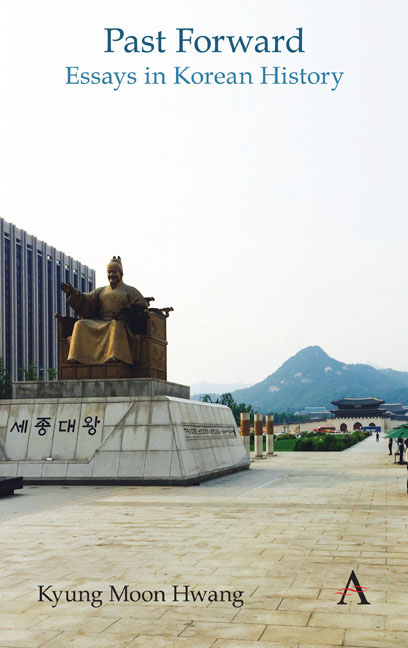Book contents
- Frontmatter
- Contents
- List of Figures
- Foreword
- Chronologies of Korean History
- Themes
- Acknowledgments
- Note on Romanization and Spelling
- Part I Circulating History
- Part II Durable Traditions
- Part III Ancient Remains
- Part IV Dynastic Depths
- Part V Modern Origins
- Part VI Challenges of Nationhood
- 30 Korea's Past in Light of Brexit
- 31 Openness and Exclusion
- 32 The North Korean View of History
- 33 Another Way to View National Division
- 34 The First National Assembly Elections
- 35 Who Started the Korean War?
- 36 Textbooks and Competing Nationalist Histories
- 37 The Complexities of Memorial Day
- 38 Adoption's Spotlight on Korean History
- 39 Questioning Monuments
- 40 Taking Ownership of the Past
- Part VII History Makers
- Part VIII External Presences
- Part IX Trials of Modernization
- Part X Gripped by the Past
- Index
34 - The First National Assembly Elections
from Part VI - Challenges of Nationhood
- Frontmatter
- Contents
- List of Figures
- Foreword
- Chronologies of Korean History
- Themes
- Acknowledgments
- Note on Romanization and Spelling
- Part I Circulating History
- Part II Durable Traditions
- Part III Ancient Remains
- Part IV Dynastic Depths
- Part V Modern Origins
- Part VI Challenges of Nationhood
- 30 Korea's Past in Light of Brexit
- 31 Openness and Exclusion
- 32 The North Korean View of History
- 33 Another Way to View National Division
- 34 The First National Assembly Elections
- 35 Who Started the Korean War?
- 36 Textbooks and Competing Nationalist Histories
- 37 The Complexities of Memorial Day
- 38 Adoption's Spotlight on Korean History
- 39 Questioning Monuments
- 40 Taking Ownership of the Past
- Part VII History Makers
- Part VIII External Presences
- Part IX Trials of Modernization
- Part X Gripped by the Past
- Index
Summary
The first National Assembly election in South Korea took place in 1948, even before the Republic of Korea formally existed. In creating the first National Assembly, or the “Constitutional Assembly,” that election laid the foundation for the South Korean state and political system. It was anything but a straightforward process, however, and thus the complex legacy of that vote remains strong today.
The first major sticking point was that the 1948 election was limited to southern Korea, which was ruled by an American military administration, and held amid tremendous political and social conflict. After failing in 1947 to reach an accord with the Soviet Union to realize a unified governing system on the peninsula, the Americans kicked the “Korea problem” to the newly formed, and largely American-dominated, United Nations. The UN Temporary Commission on Korea could not gain cooperation from the Soviets, however, or even entry into northern Korea. It therefore proceeded, under American guidance, to set up elections in only the southern half of the country, to take place in early May 1948.
This sparked passionate opposition from a wide range of people, from communists to nationalists, who feared that such a step would harden national division. Two such figures, Gim Gu and Gim Gyu-sik, even took a trip to Pyongyang to meet with Kim Il-Sung, the North's communist leader. But upon their return to the south, they were condemned by the press for having been duped by the communists, which only helped the hardliners who wanted to move forward with the separate southern election. Needless to say, these two men, along with many other political and cultural leaders, refused to participate.
The most vehement resistance to the elections, however, came in early April 1948 from some inhabitants of Jeju Island who rose up against the oppressive actions of the police and right-wing youth groups, the most notorious of which originated in northern Korea. In response, these same paramilitary forces, along with army troops, terrorized the population and brutally killed thousands over the ensuing months. This was part of a general cleansing of leftist and even moderate elements who expressed opposition to the election and to the nascent southern system coming into form.
- Type
- Chapter
- Information
- Past ForwardEssays in Korean History, pp. 98 - 100Publisher: Anthem PressPrint publication year: 2019



